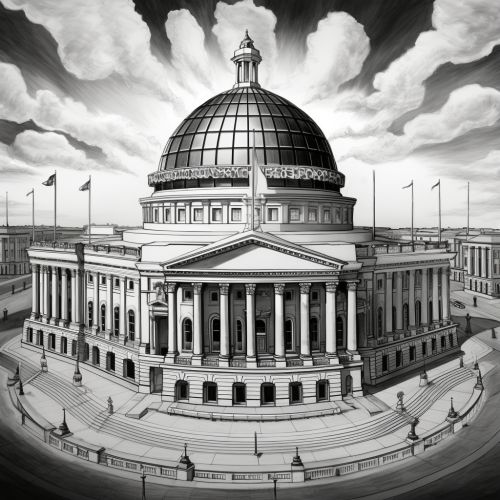German Reich
Origins and Establishment
The German Reich, also known as the German Empire, was established in 1871 following the successful unification of various German states under the leadership of Prussian King Wilhelm I and his Chancellor, Otto von Bismarck. The unification process was primarily driven by a series of wars, including the Second Schleswig War, the Austro-Prussian War, and the Franco-Prussian War. These conflicts, strategically engineered by Bismarck, resulted in the ascendance of Prussia as the dominant power among the German states.


Political Structure and Governance
The German Reich was a federal state, composed of 25 constituent states, known as Bundesstaaten, and three city-states, or Stadstaaten. The political structure of the Reich was characterized by a strong central government, with the Kaiser serving as the head of state and wielding considerable power. The Reichstag, the parliament of the German Reich, was elected by universal male suffrage and held legislative power. However, the Chancellor, appointed by the Kaiser, held executive power and was not responsible to the Reichstag, reflecting the autocratic nature of the Reich's governance.
Economy and Industrialization
The German Reich experienced rapid industrialization and economic growth during its existence. The Ruhr region became a major industrial hub, producing coal, steel, and iron. The Reich also saw significant advancements in the chemical and electrical industries. This period of economic expansion, known as the Gründerzeit, was marked by the establishment of large corporations and banks, which played a crucial role in the Reich's economic development.
Society and Culture
Society in the German Reich was marked by a distinct class structure, with a small aristocratic elite, a growing middle class, and a large working class. The period saw significant cultural and intellectual developments, with contributions to philosophy, literature, music, and the sciences. The Reich also saw the rise of various social and political movements, including the Social Democratic Party, which advocated for workers' rights and social reform.
World War I and the End of the Reich
The German Reich's involvement in World War I marked the beginning of its end. The Reich entered the war in 1914, as part of the Central Powers, against the Allies. The war resulted in significant political, economic, and social upheaval in the Reich, culminating in the German Revolution of 1918-1919. The revolution led to the abdication of Kaiser Wilhelm II and the establishment of the Weimar Republic, marking the end of the German Reich.
